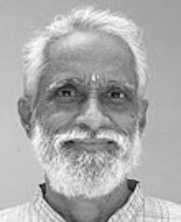
Yoga is a group of physical, mental, and spiritual practices or disciplines which originated in ancient India and aim to control (yoke) and still the mind, recognizing a detached witness-consciousness untouched by the mind (Chitta) and mundane suffering (Duḥkha). There is a wide variety of schools of yoga, practices, and goals in Hinduism, Buddhism, and Jainism, and traditional and modern yoga is practiced worldwide.
In yoga, Ayurveda and Indian martial arts, prana permeates reality on all levels including inanimate objects. In Hindu literature, prāṇa is sometimes described as originating from the Sun and connecting the elements.

Ashtanga vinyasa yoga is a style of yoga as exercise popularised by K. Pattabhi Jois during the twentieth century, often promoted as a dynamic form of classical Indian (hatha) yoga. Jois claimed to have learnt the system from his teacher Tirumalai Krishnamacharya. The style is energetic, synchronising breath with movements. The individual poses (asanas) are linked by flowing movements (vinyasas).

Bellur Krishnamachar Sundararaja Iyengar was an Indian teacher of yoga and author. He is founder of the style of yoga as exercise, known as "Iyengar Yoga", and was considered one of the foremost yoga gurus in the world. He was the author of many books on yoga practice and philosophy including Light on Yoga, Light on Pranayama, Light on the Yoga Sutras of Patanjali, and Light on Life. Iyengar was one of the earliest students of Tirumalai Krishnamacharya, who is often referred to as "the father of modern yoga". He has been credited with popularizing yoga, first in India and then around the world.
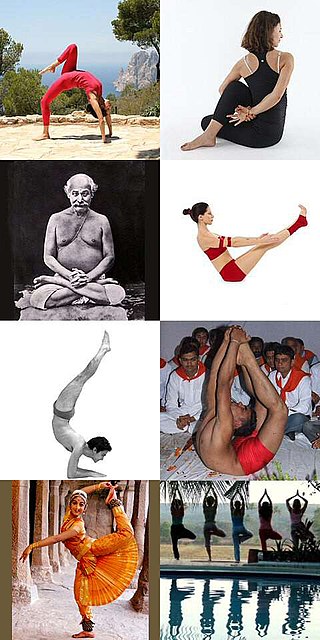
An āsana is a body posture, originally and still a general term for a sitting meditation pose, and later extended in hatha yoga and modern yoga as exercise, to any type of position, adding reclining, standing, inverted, twisting, and balancing poses. The Yoga Sutras of Patanjali define "asana" as "[a position that] is steady and comfortable". Patanjali mentions the ability to sit for extended periods as one of the eight limbs of his system. Asanas are also called yoga poses or yoga postures in English.
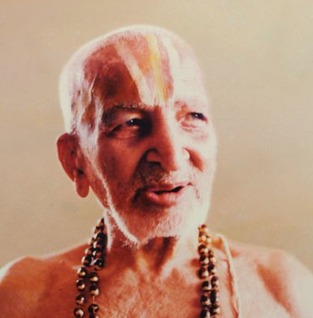
Tirumalai Krishnamacharya was an Indian yoga teacher, ayurvedic healer and scholar. He is seen as one of the most important gurus of modern yoga, and is often called "Father of Modern Yoga" for his wide influence on the development of postural yoga. Like earlier pioneers influenced by physical culture such as Yogendra and Kuvalayananda, he contributed to the revival of hatha yoga.
A. H. Almaas is the pen name of A. Hameed Ali, a Kuwaiti American author and spiritual teacher who writes about and teaches an approach to spiritual development informed by modern psychology and therapy which he calls the Diamond Approach. "Almaas" is the Arabic word for "diamond". Almaas is originally from Kuwait. He is the spiritual head of the Ridhwan School.

Sharon Salzberg is a New York Times bestselling author and teacher of Buddhist meditation practices in the West. In 1974, she co-founded the Insight Meditation Society at Barre, Massachusetts, with Jack Kornfield and Joseph Goldstein. Her emphasis is on vipassanā (insight) and mettā (loving-kindness) methods, and has been leading meditation retreats around the world for over three decades. All of these methods have their origins in the Theravada Buddhist tradition. Her books include Lovingkindness: The Revolutionary Art of Happiness (1995), A Heart as Wide as the World (1999), Real Happiness - The Power of Meditation: A 28-Day Program (2010), which was on The New York Times Best Seller list in 2011, and the follow-up Real Happiness at Work (2013). She runs a Metta Hour podcast, and contributes monthly to a column On Being.
The Yoga Yajnavalkya is a classical Hindu yoga text in the Sanskrit language. The text is written in the form of a male-female dialogue between the sage Yajnavalkya and Gargi. The text consists of 12 chapters and contains 504 verses.
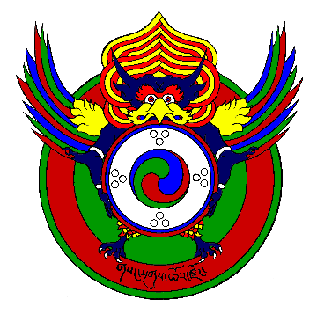
The Aro gTér is a lineage within the Nyingma school of Tibetan Buddhism. The pure vision terma on which it is based teaches all Buddhist topics from the point of view of Dzogchen. The Aro gTer terma was received by Western-born Buddhist, Ngakpa Chögyam. The lineage is a ngagpa or non-monastic lineage and emphasizes householder practice and non-celibate ordination. All of its contemporary teachers are ethnically non-Tibetan.
Lung means wind or breath. It is a key concept in the Vajrayana traditions of Tibetan Buddhism and has a variety of meanings. Lung is a concept that is particularly important to understandings of the subtle body and the trikaya. Traditional Tibetan medicine practitioner Tamdin Sither Bradley provides a summary:
The general description of rLung is that it is a subtle flow of energy and out of the five elements it is most closely connected with air. However it is not simply the air which we breathe or the wind in our stomachs, it goes much deeper than that. rLung is like a horse and the mind is the rider, if there is something wrong with the horse the rider will not be able to ride properly. Its description is that it is rough, light, cool, thin, hard, movable. The general function of rLung is to help growth, movement of the body, exhalation and inhalation and to aid the function of mind, speech and body. rLung helps to separate in our stomachs what we eat into nutrients and waste products. However its most important function is to carry the movements of mind, speech and body. The nature of rLung is both hot and cold.
Shenlha Ökar or Shiwa Ökar is the most important deity in the Yungdrung Bon tradition of Tibet. He is counted among the "Four Transcendent Lords" along with Satrig Ersang, Sangpo Bumtri, and Tonpa Shenrab Miwoche.

Khenpo Gangshar Wangpo was a highly respected lama in Eastern Tibet and one of the primary teachers of Chögyam Trungpa Rinpoche and the 9th Thrangu Rinpoche. Khenpo Gangshar was trained in Shechen Monastery, a monastic center established in the end of the seventeenth century and part of the Mindröling lineage within the Nyingma tradition of Tibetan Buddhism.

Brahmamuhurta is a 48-minute period (muhurta) that begins one hour and 36 minutes before sunrise, and ends 48 minutes before sunrise. It is traditionally the penultimate phase or muhurta of the night, and is considered an auspicious time for all practices of yoga and most appropriate for meditation, worship or any other religious practice. Spiritual activities performed early in the morning are said to have a greater effect than in any other part of the day.

Krishnamacharya: His Life and Teachings is a book written by A. G. Mohan with Ganesh Mohan. This book is a tribute to "the father of modern yoga," Tirumalai Krishnamacharya (1888–1989). Krishnamacharya was a renowned Indian yoga master, ayurvedic healer, and scholar who created many of the practices of yoga as exercise, and whose students B. K. S. Iyengar, Indra Devi, K. Pattabhi Jois, and T. K. V. Desikachar dramatically popularized yoga in the West.
This is a list of works published by Pema Chödrön, buddhist nun and student of Chögyam Trungpa Rinpoche. An author and acharya, Chödrön was a senior teacher of the Shambhala Buddhist lineage Trungpa founded. She has been the resident teacher and founding director of Gampo Abbey in Nova Scotia since 1984.
Tirumalai Krishnamacharya Venkata Desikachar, better known as T. K. V. Desikachar, was a yoga teacher, son of the pioneer of modern yoga as exercise, Tirumalai Krishnamacharya. The style that he taught was initially called Viniyoga although he later abandoned that name and asked for the methods he taught to be called "yoga" without special qualification.
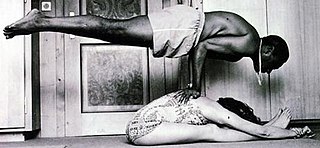
Vanda Scaravelli is known for her contribution to the practice of yoga in the West. She learnt yoga as an early student of two of Tirumalai Krishnamacharya's pupils, B. K. S. Iyengar who taught her the asanas, and T. K. V. Desikachar who taught her pranayama. Her style of yoga was developed with the help of her long-term students, the yoga teachers Diane Long and Esther Myers, who continued the evolution of Vanda's non-lineage yoga. Scaravelli asked her followers not to name any school of yoga after her; this has not prevented some yoga teachers from claiming to teach "Scaravelli-inspired yoga".

Yoga Makaranda, meaning "Essence of Yoga", is a 1934 book on hatha yoga by the influential pioneer of yoga as exercise, Tirumalai Krishnamacharya. Most of the text is a description of 42 asanas accompanied by 95 photographs of Krishnamacharya and his students executing the poses. There is a brief account of practices other than asanas, which form just one of the eight limbs of classical yoga, that Krishnamacharya "did not instruct his students to practice".

Postural yoga began in India as a variant of traditional yoga, which was a mainly meditational practice; it has spread across the world and returned to the Indian subcontinent in different forms. The ancient Yoga Sutras of Patanjali mention yoga postures, asanas, only briefly, as meditation seats. Medieval Haṭha yoga made use of a small number of asanas alongside other techniques such as pranayama, shatkarmas, and mudras, but it was despised and almost extinct by the start of the 20th century. At that time, the revival of postural yoga was at first driven by Indian nationalism. Advocates such as Yogendra and Kuvalayananda made yoga acceptable in the 1920s, treating it as a medical subject. From the 1930s, the "father of modern yoga" Krishnamacharya developed a vigorous postural yoga, influenced by gymnastics, with transitions (vinyasas) that allowed one pose to flow into the next.
